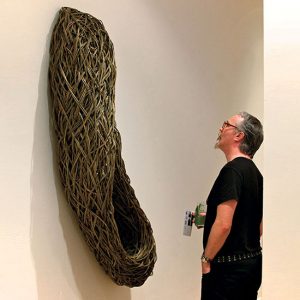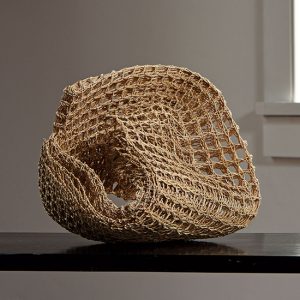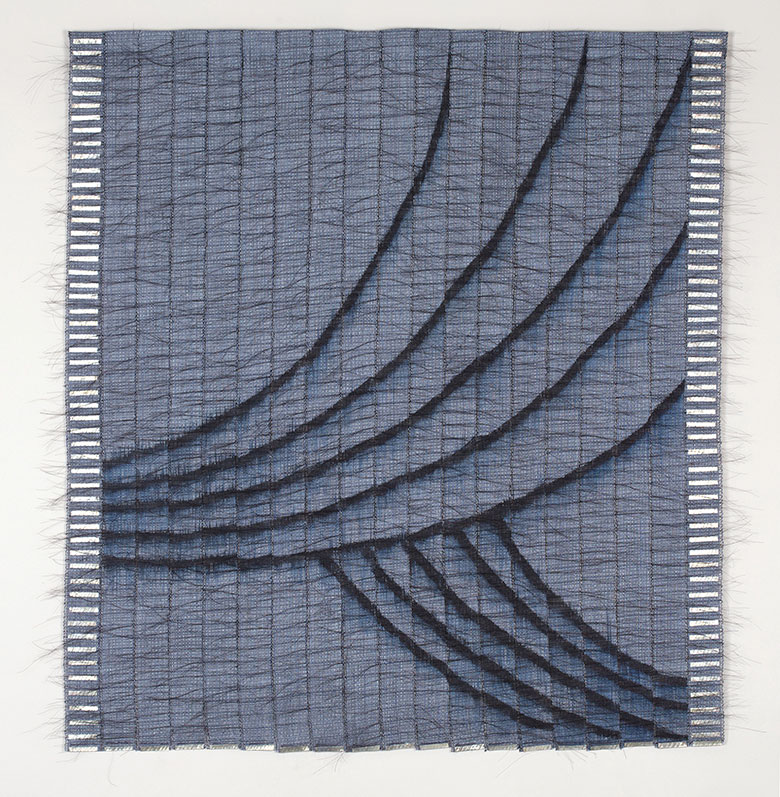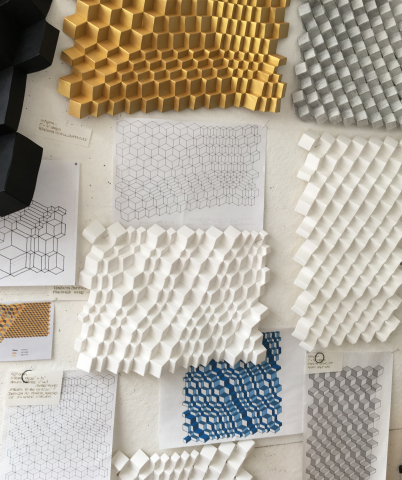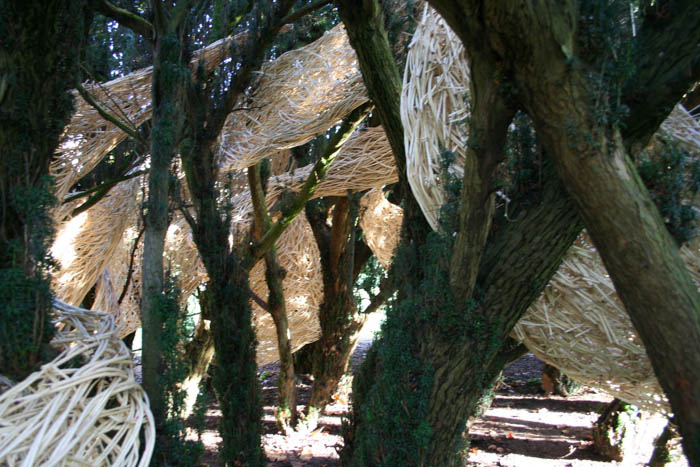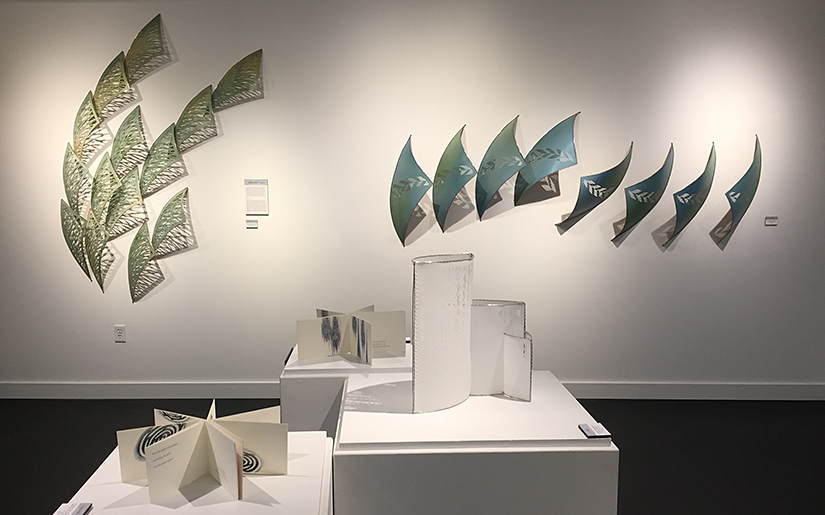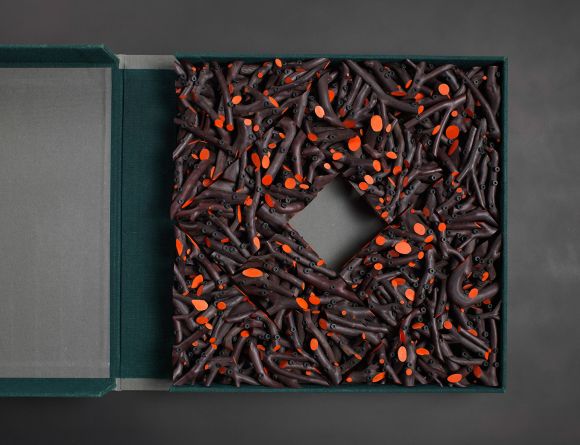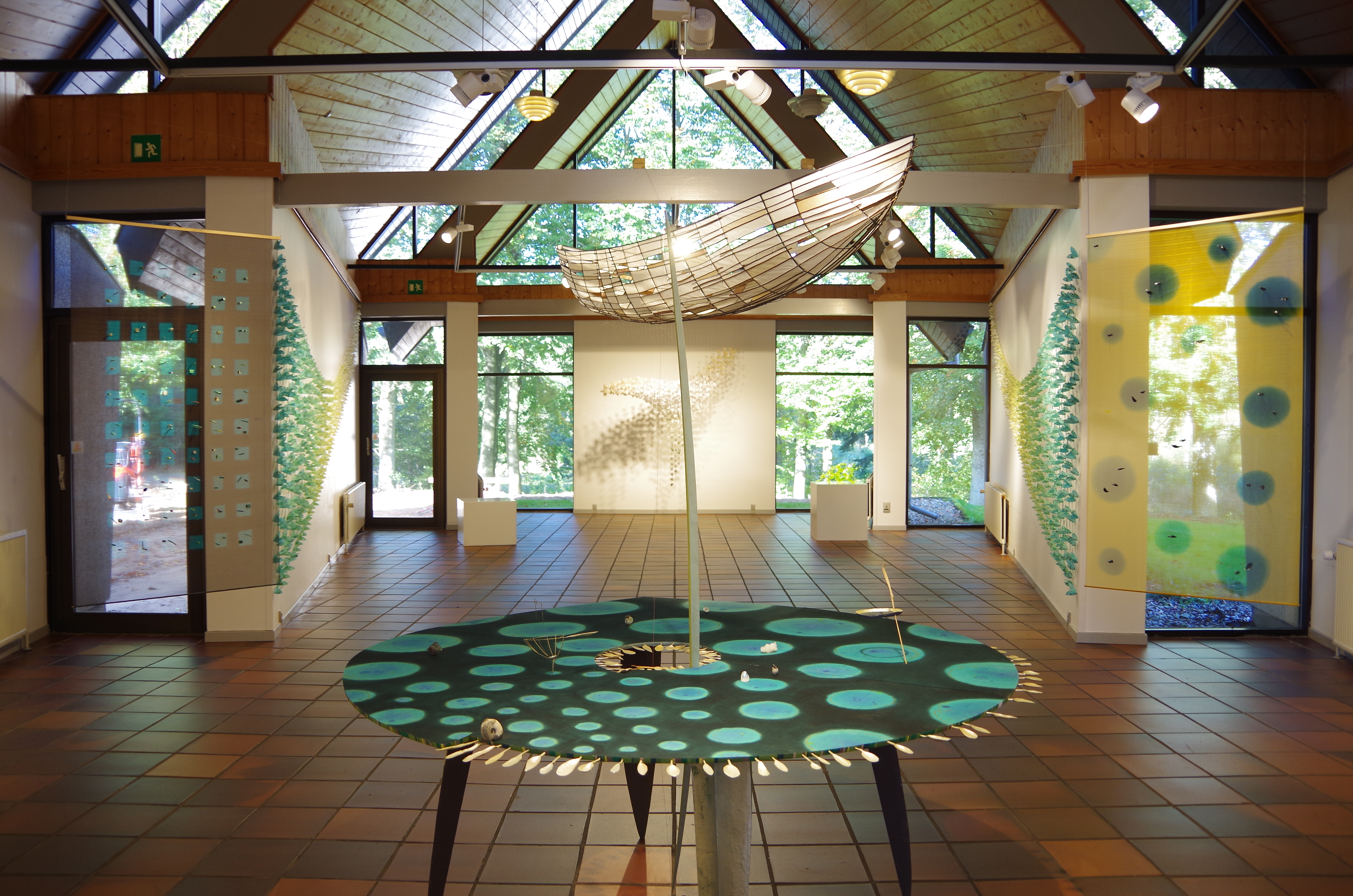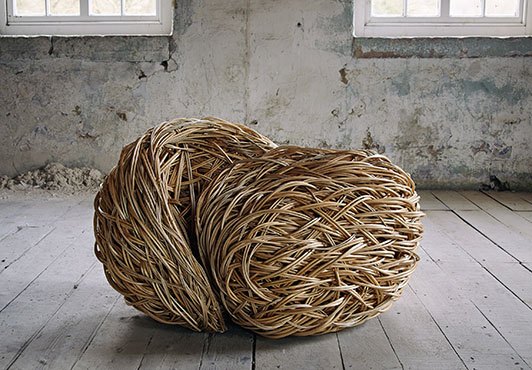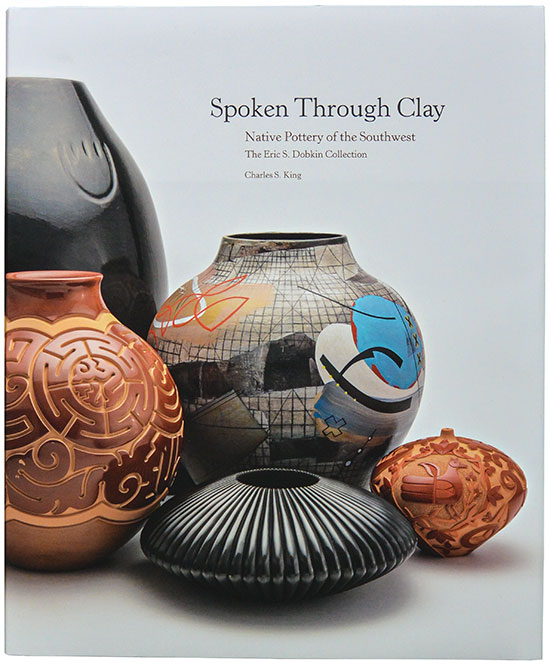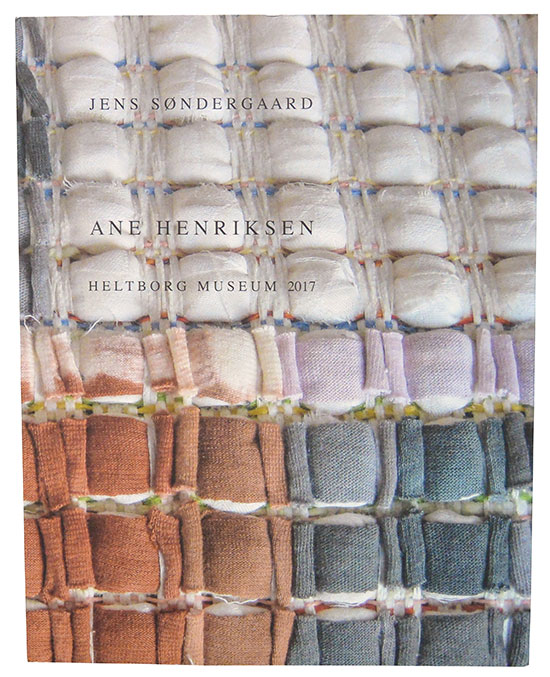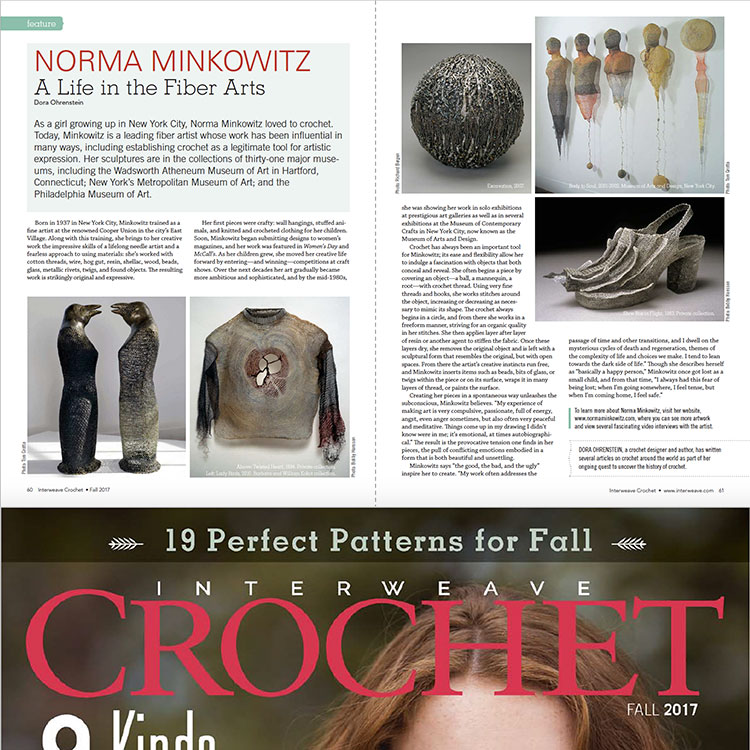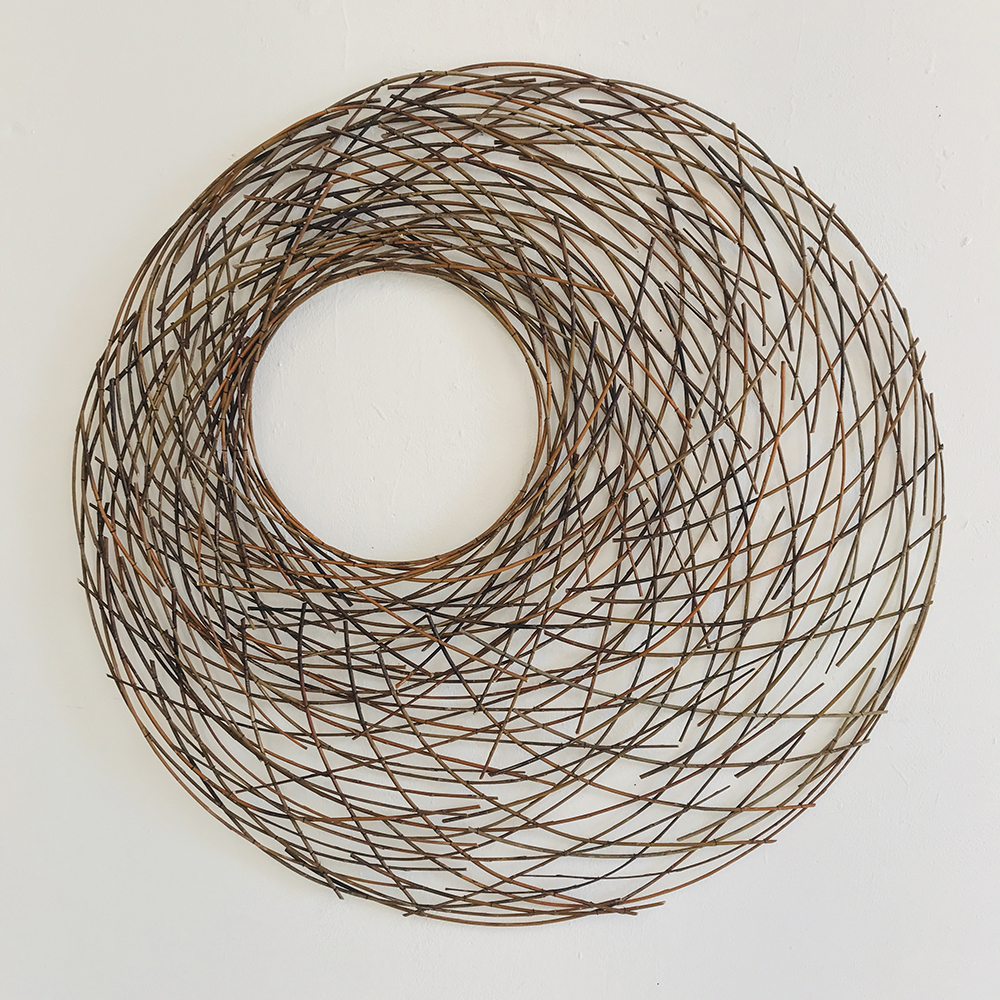
© Lizzie Farey
Works by a notable group of artists are on exhibit in Basketry: Function & Ornament at the Ruthin Craft Centre in the UK through October 13, 2019. The exhibition, curated by Gregory Parsons, looks at current practice of some 30 makers from throughout the UK including bg artists Lizzie Farey, Dail Behennah, Tim Johnson, Rachel Max and Laura Ellen Bacon. Basketry: Function & Ornament brings together functional vernacular work from various parts of the country, alongside pieces that are sculptural and ornamental, providing “a survey of a craft that has been somewhat sidelined in times of great technological advances, yet offers a sustainable answer to so much of our modern day throw-away habits.”
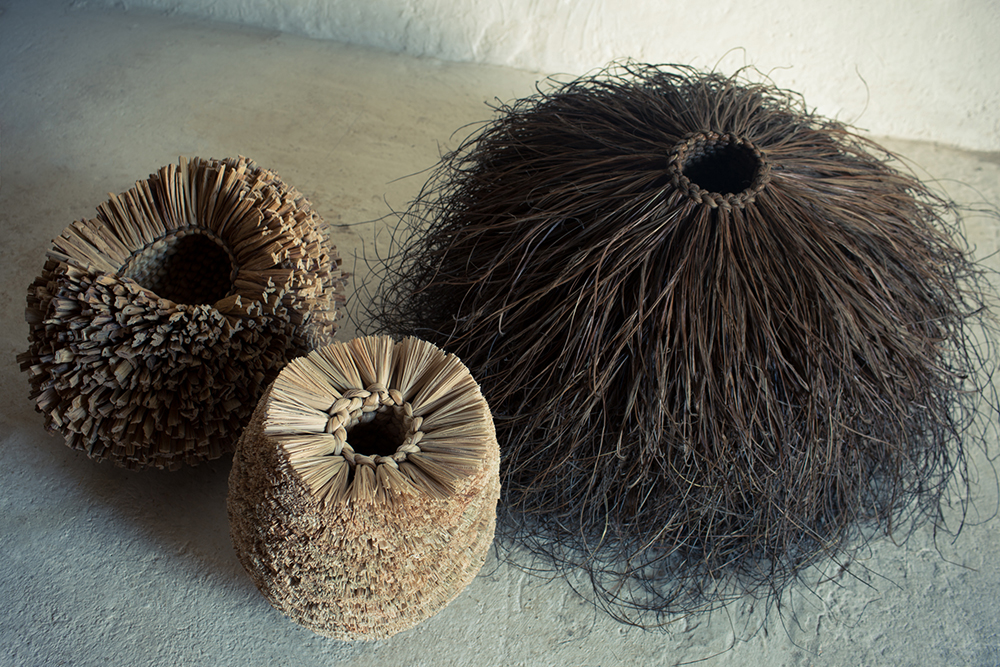
© Tim Johnson, 2019
Tim Johnson’s artistry is represented by baskets from his “Keeping Time” series. “These ‘keeping time’ baskets, like all baskets, take time to make,” he says. “The twining, folding and stitching that holds them together marks increments of being, a declaration of presence, the makers time is kept in the work, a trace of activity. “
Thatched and piled textile structures date back to Neolithic times, Johnson says, providing insulation and weather protection in our ancestors garments and shelters. “In the ‘keeping time’ series I am happy to work in this tradition and relate the basket’s captured spaces to the containment of ancient clothing and architecture.”
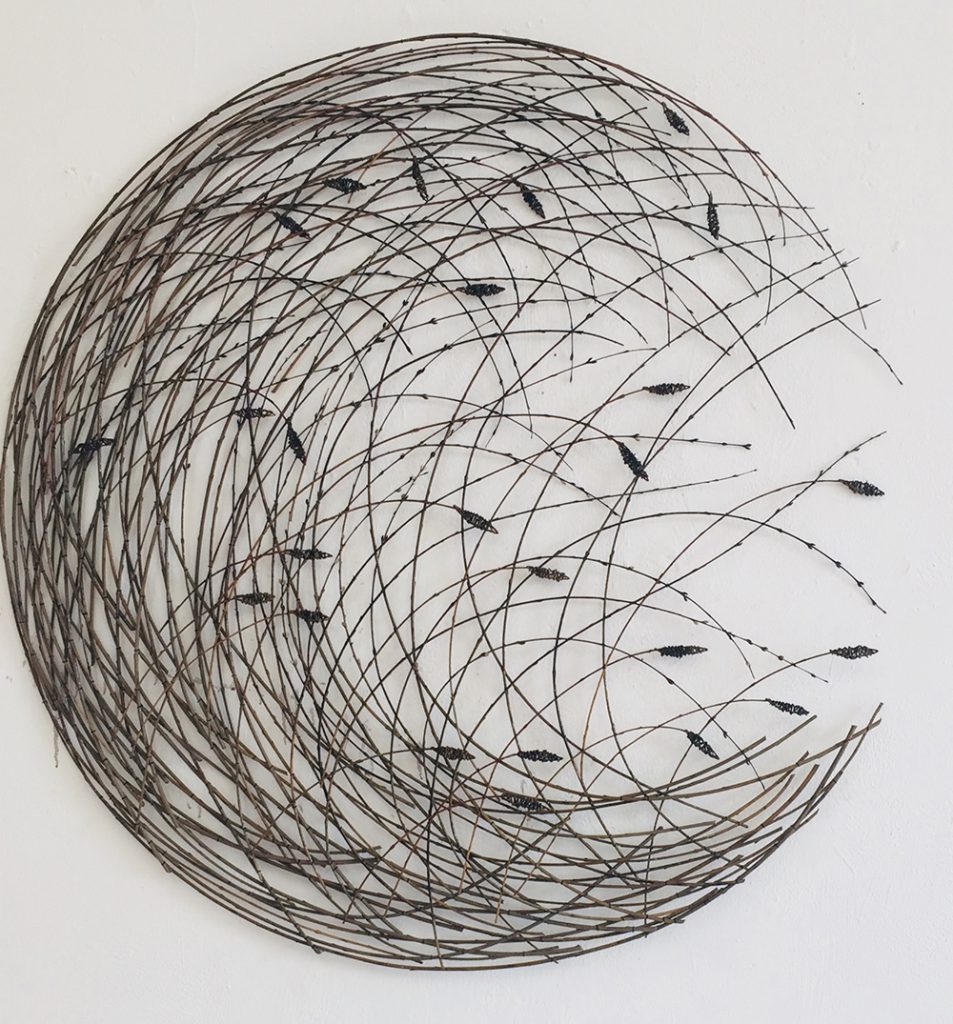
© Lizzie Farey
The other artists in Basketry: Function & Ornament include influential makers Lois Walpole and Mary Butcher, the remarkable Irish basketmaker Joe Hogan and Lise Bech along with Mandy Coates, John Cowan, Mary Crabb, Jane Crisp, Jenny Crisp, Alison Dickens, Rosie Farey, Eddie Glew, Charlie Groves, Stella Harding, Peter Howcroft, Anna King, Annemarie O’Sullivan, Sarah Paramor, Dominic Parrette, Polly Pollock, Ruth Pybus & David Brown, Clare Revera, Lorna Singleton and Maggie Smith.
RUTHIN CRAFT CENTRE
THE CENTRE FOR THE APPLIED ARTS
PARK ROAD, RUTHIN
DENBIGHSHIRE
LL15 1BB
OPEN DAILY
10.00AM – 5.30PM
ADMISSION FREE

